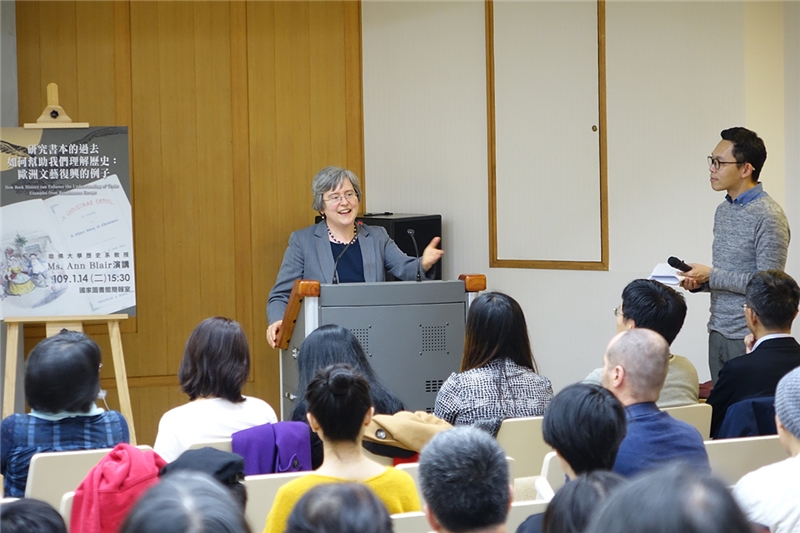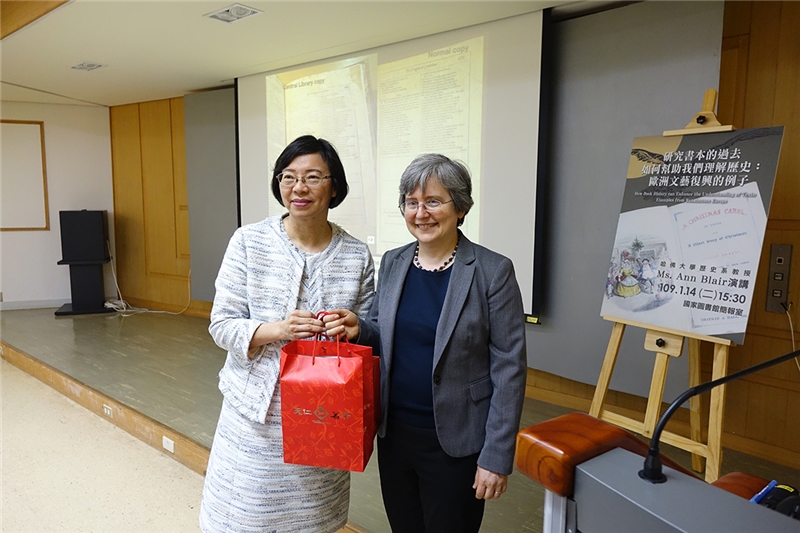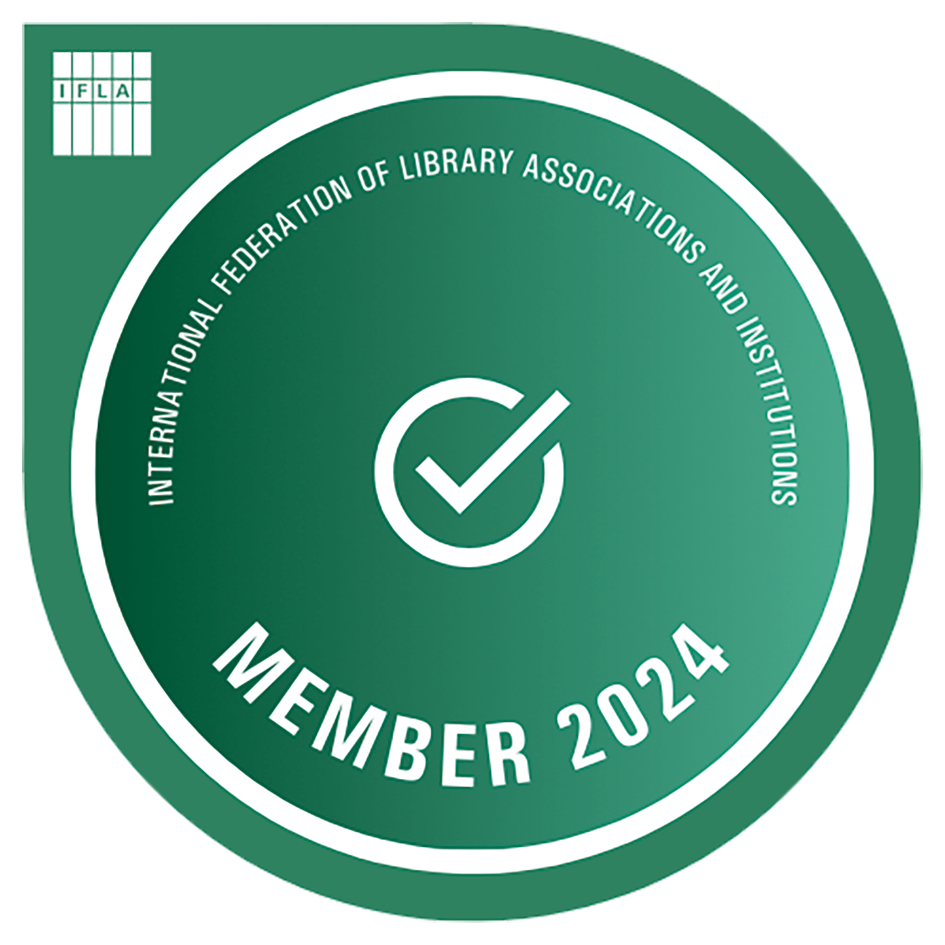News & Events
- 2020-03-11

On January 14, 2020, National Central Library invited Harvard University Professor Ann Blair to speak at NCL on “How book history can enhance the understanding of texts: examples from early modern Europe.” Dr. Blair shared in her lecture the history of artifact research and textual transmission of knowledge. Through writing and dissemination, they form culture. Such queries as “Who wrote these texts?” and “Who is the intended audience of book editing?” are basic research questions and thought patterns. She spoke of the influence of printing techniques, or what is called early modern printing in Europe. She then spoke of initial process of scholars and textual transmission knowledge beginning with the Renaissance. Next she spoke of the religious reforms brought about by Martin Luther and the scientific concepts of Descartes and others from the Enlightenment, when the value of transmitted knowledge greatlyincreased.
Dr. Blair also spoke on the significance ofthe German bible in terms of printing history, cultural history, andtranslation and dissemination. Rare books from the West reveal artistic worksresulting from exquisite printing, manual revisions, and manuscriptillustrations. Dr. Blair then introduced the illustrations and exquisiteportraits in rare Western works, as well as how techniques in book decorationsinfluenced the rise of business in Europe. She also spoke of the phenomenon of rareWestern books, specifically through fact that many printers, editors, carvers,and errata were recorded much value was added to these ancient books.
Dr. Blair spoke of Francis Bacon, the famous thinker, researcher, businessman, and even failed politician (due to ascandal). One main characteristic of his writings was the fact that the marginswere all blank. Through new discoveries and new items, Bacon enabled us toaccumulate more knowledge. Through copperplate illustrations, we can see thethoughts the author wanted to portray; that is to say, surging forth on a tidalwave as we navigate the sea of knowledge.
A folio version of Shakespeare is differentthan the books in Latin that Francis Bacon wrote, making it a rare edition ofShakespeare’s collected plays. From the inserts in the book an outline ofcities at the time is visible, as well as the rejection of actors andtheatrical companies by people at the time. For this purpose, after Shakespearedied his friend went to much pains to print this folio version in an attempt toremedy this type of prejudice. Dr. Blair analyzed the difference between thefirst and second folio version, as well as the traces of glue used in fixingthem.
Dr. Blair is a professor at Harvard University, earning a M.A. in the history andphilosophy of science at Cambridge University and a Ph.D. at Princeton. In 1992,she taught in the history department at UC Irvine. In 1996, she transferred tothe history department at Harvard. In 2001 she was made full professor, and in 2005became the Henry Charles Lea Professor of History. Beginning in 2016, she wasawarded the Carl H. Pforzheimer University Professorship. Dr. Blair’s field ofresearch is modern European though, cultural history, books, reading, and the relationship between religion and science. Important publications include The Theater of Nature: Jean Bodin and Renaissance Science (Princeton, NJ: Princeton University Press, 1997), Too Much To Know: Managing Scholarly Informationbefore the Modern Age (New Haven: Yale University Press, 2010)
- Resources
- NEWS & Events
- ABOUT NCL
- International Cooperation and Exchange
- Services








